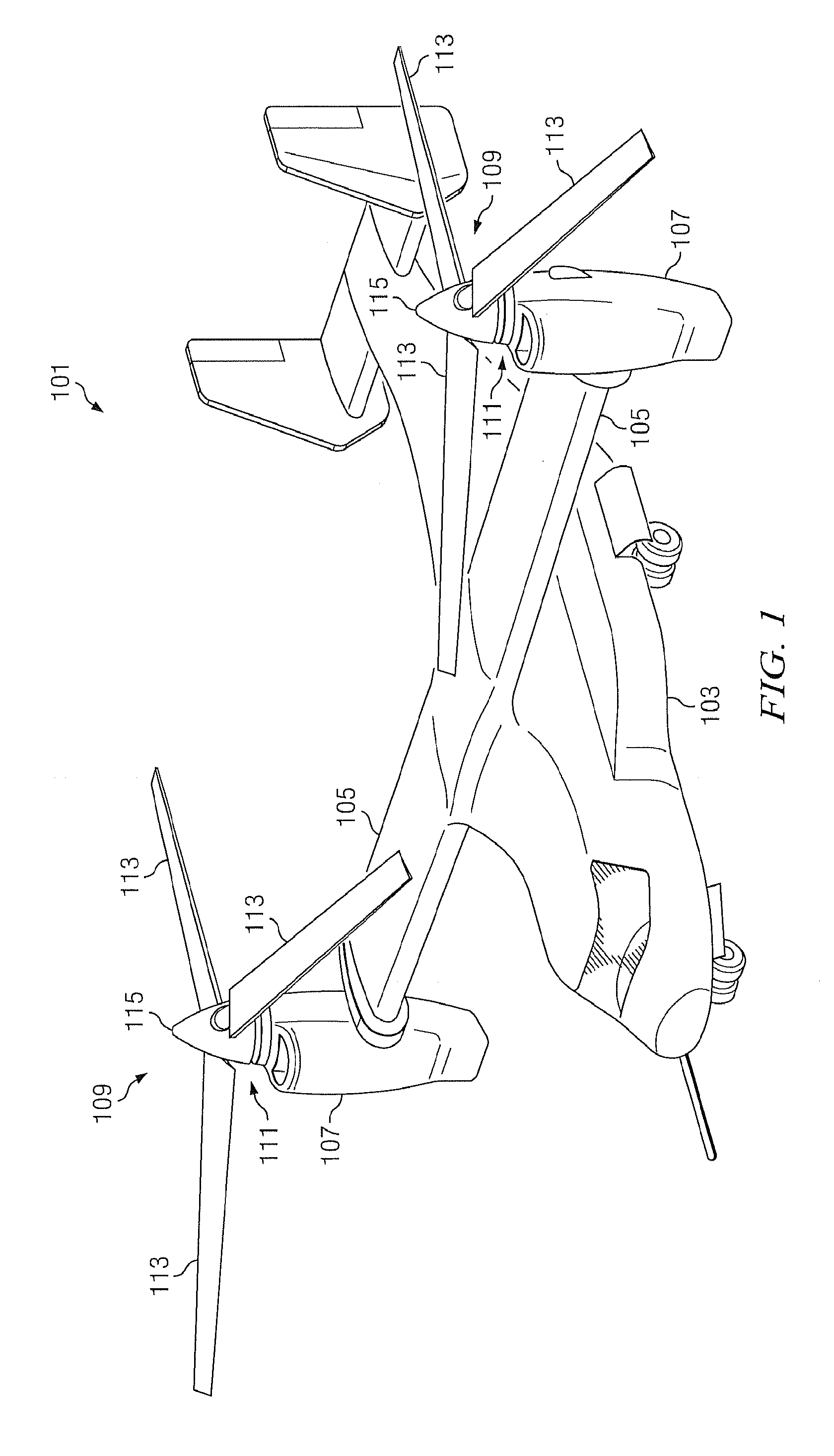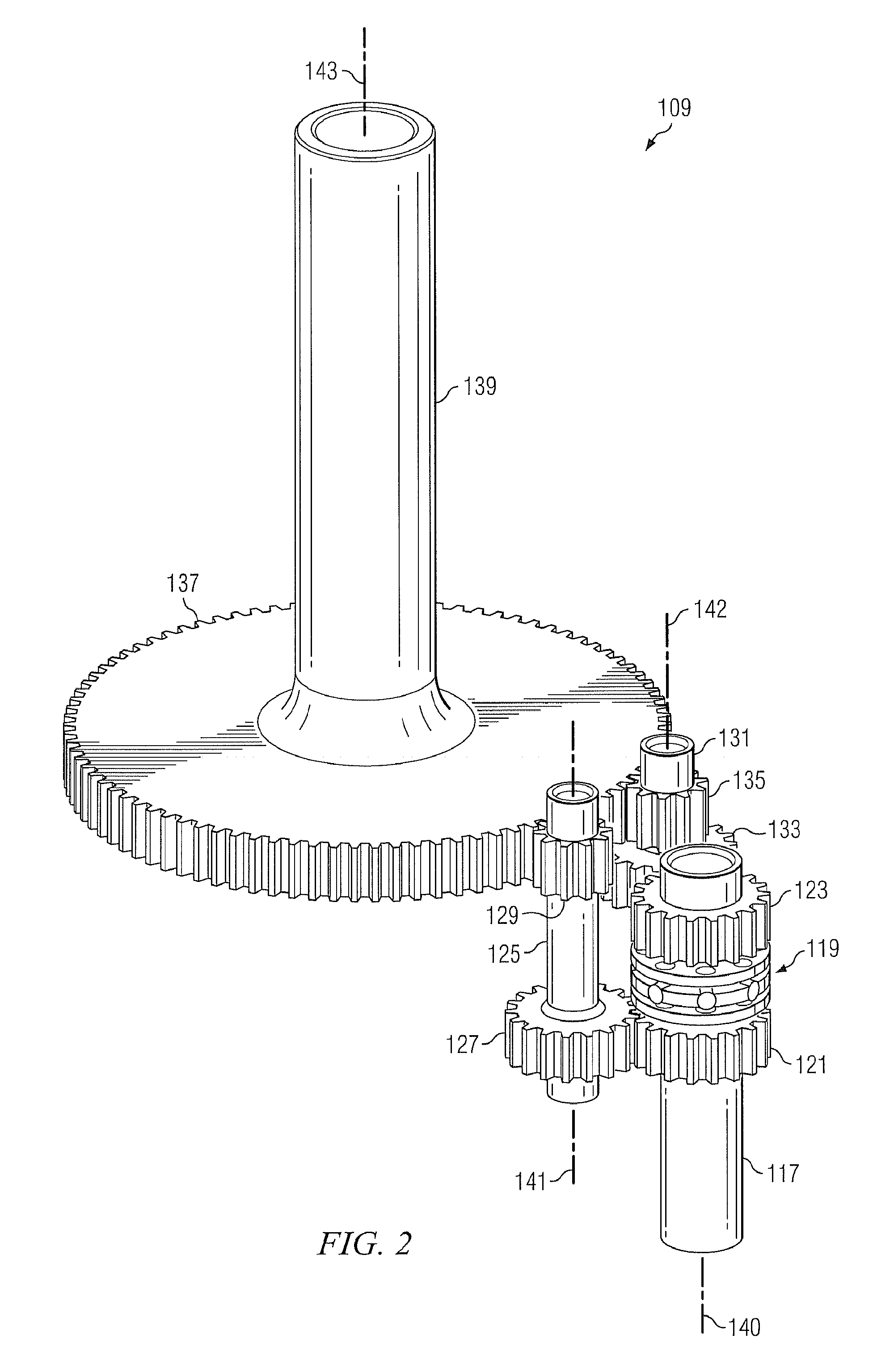Multiple Drive-Path Transmission with Torque-Splitting Differential Mechanism
a technology of torque splitting differential and drive path transmission, which is applied in the direction of mechanical equipment, transportation and packaging, etc., can solve the problems of reducing affecting the reliability of rotary-wing aircraft, and a number of unfortunate design limitations, so as to reduce the size and/or weight of bull gears.
- Summary
- Abstract
- Description
- Claims
- Application Information
AI Technical Summary
Benefits of technology
Problems solved by technology
Method used
Image
Examples
Embodiment Construction
[0026]The present invention represents the discovery that a torque-splitting differential mechanism can be advantageously used to deliver torque through multiple drive paths to a bull gear. While specific reference is made to using the present invention with tiltrotor rotary-wing aircraft, the transmission of the present invention may alternatively be used to transfer torque in any appropriate type of application.
[0027]FIG. 1 depicts a tiltrotor rotary-wing aircraft incorporating the transmission of the present invention. FIG. 1 illustrates a tiltrotor aircraft 101 in a helicopter mode of flight operation. Aircraft 101 comprises a fuselage 103 with attached wings 105. Nacelles 107 are carried at the outboard ends of wings 105 and are rotatable between the helicopter-mode position shown and a forward-facing airplane-mode position (not shown). Nacelles 107 carry engines and transmissions 109 for powering rotor systems 111 in rotation. It will be appreciated that an engine may be an in...
PUM
 Login to View More
Login to View More Abstract
Description
Claims
Application Information
 Login to View More
Login to View More - R&D
- Intellectual Property
- Life Sciences
- Materials
- Tech Scout
- Unparalleled Data Quality
- Higher Quality Content
- 60% Fewer Hallucinations
Browse by: Latest US Patents, China's latest patents, Technical Efficacy Thesaurus, Application Domain, Technology Topic, Popular Technical Reports.
© 2025 PatSnap. All rights reserved.Legal|Privacy policy|Modern Slavery Act Transparency Statement|Sitemap|About US| Contact US: help@patsnap.com



